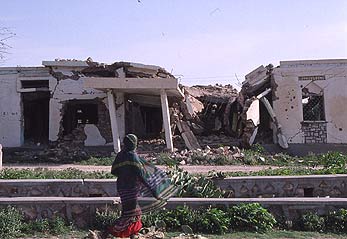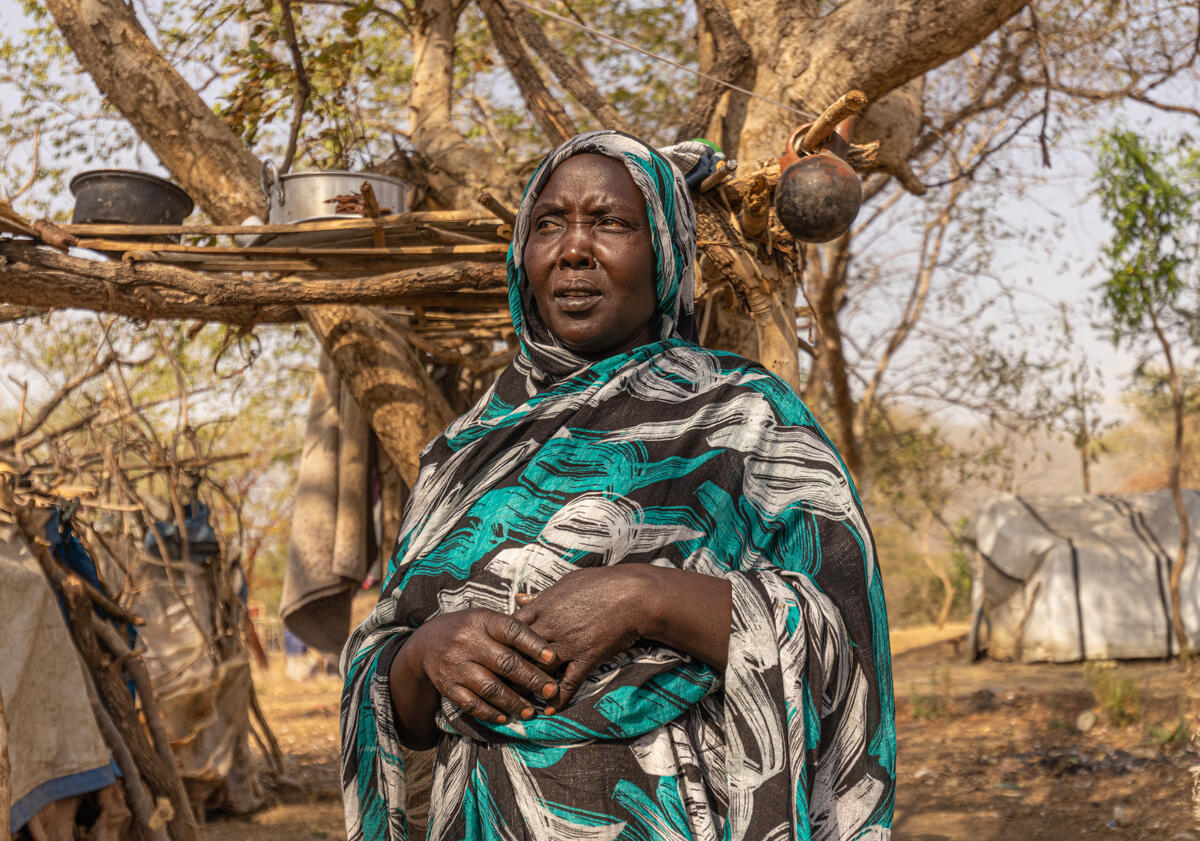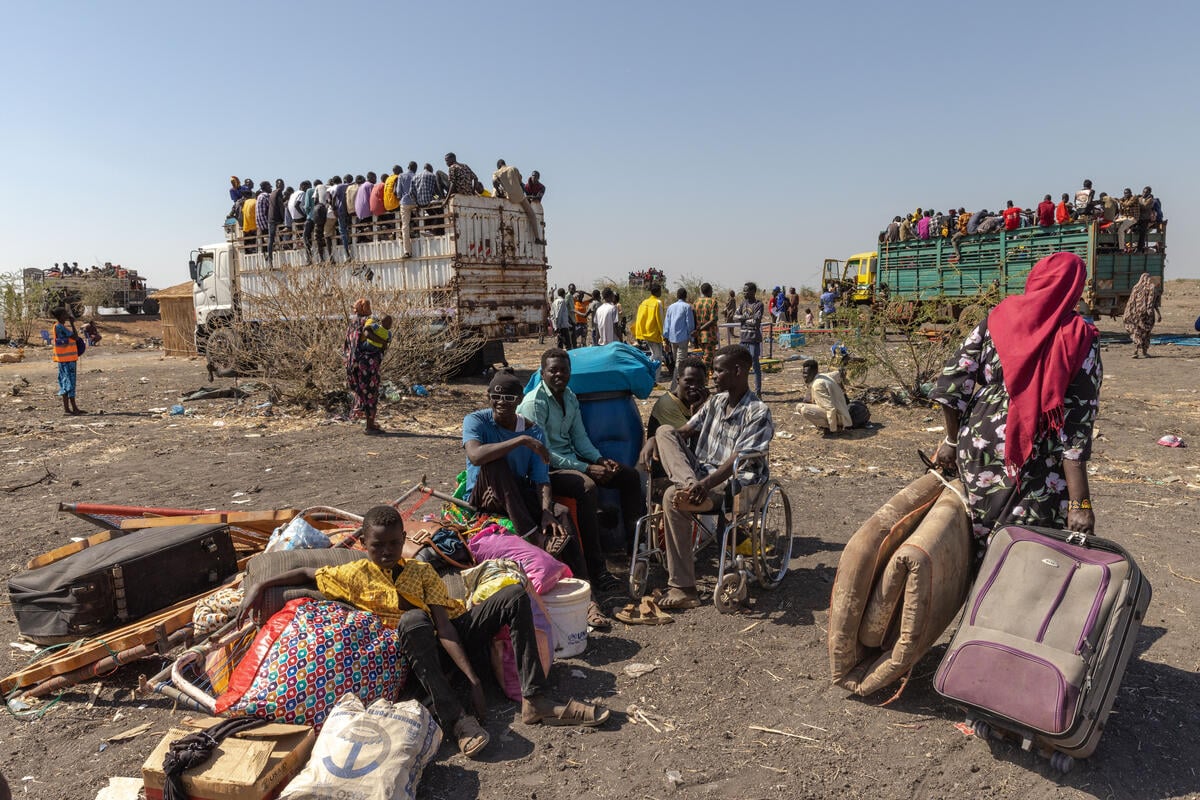Feature: Bittersweet return to Somaliland
Feature: Bittersweet return to Somaliland

HARGEISA, North-west Somalia (UNHCR) - "Home Sweet Home" to Ahmed Abdi is a small, igloo-shaped structure, covered with bits of plastic sheeting and flattened tin cans, occupying a patch of barren land on the outskirts of Hargeisa, the capital of Somaliland.
But despite a life of joblessness and poverty, he said that after several years spent wandering across the Horn of Africa - first homeless, then as a refugee - he would not trade it for the world.
"Life is better here. I am happy to be hungry in my home country," he said.
Abdi is typical of thousands of Somali refugees who fled from years of civil war and inter-clan warfare in Somalia to neighbouring countries and are now, with UNHCR assistance, returning to their homeland - and, in most cases, to very little.
"Peace and land is all that we have, all we can offer them," said the President of Somaliland, Dahir Riyale Kahin. "Our country has no economy, so there are a lot of problems, but it is a must to receive them since they are our citizens."
Despite the harsh life that awaits them, thousands of refugees have returned in recent years. On May 23, UNHCR started this year's first voluntary repatriation. A UNHCR-led convoy of 27 trucks and nine buses, carrying around 1,500 refugees, wound its way across inhospitable desert terrain from Rabasso camp in eastern Ethiopia. A few days later, a second convoy left the nearby Camoboker camp with a further 2,000 returnees on board. Both camps are set to be closed by the end of the year.
One woman, boarding the convoy at Rabasso, told UNHCR she was pleased to be going home after over a decade in exile, but realised life was not going to be easy. "I will try my best to survive and stand on my own two feet. I will make my own tukul and manage somehow," she said, referring to Somali makeshift shelters.
"This is a sign of hope because it shows the confidence of the people in north-west Somalia," said Simone Wolken, who heads UNHCR Somalia. "Peace and stability have really returned to their home areas. They now look forward to recovery assistance from the international community so as to be truly able to contribute to the rebuilding of their societies."
At the height of the crisis in 1991/92, over 800,000 Somali refugees fled to Kenya, Ethiopia, Djibouti and Yemen in one of the fastest and largest population displacements in Africa. Some 500,000 were in eastern Ethiopia alone, itself an impoverished region.
Last year, more than 50,000 Somali refugees - mainly from camps in Ethiopia - returned to north-west Somalia, leading to the closure of three of the eight camps for Somalia refugees in Ethiopia. The closure of two more camps this year will allow for the consolidation of the remaining refugees into three camps.
In total, the voluntary repatriation programme now underway plans to take around 35,000 refugees home by the end of this year, cutting by more than half the current number of 66,932 Somali refugees seeking refuge in Ethiopia. UNHCR is also drawing up plans to facilitate the return of a further 5,000 each from Kenya, Djibouti and Yemen.
"We are very pleased with the process of repatriation," said Wolken. "Reintegration, however, remains a real challenge."
Unemployment rates are around 90 percent in the areas where the returning refugees are settled. Like many others, Abdi ekes out a living doing odd jobs, such as repairing dirt roads, for the occasional handout or meal from grateful residents. By any measure, Somalia is one of least developed countries in the world. Ranked globally, major human development indicators would place Somalia 161 out of 163, above only Sierra Leone and Niger.
UN statistics show that in the resettlement camps around Hargeisa, almost half of the residents eat meat only once a month or less, and two out of five families report never buying milk.
The few facilities available have been provided mainly by UNHCR. Such activities, the agency says, form part of its wider mandate to facilitate refugee returns. Working with local and international non-governmental organisations, UNHCR has built schools, sanitation plants and health clinics, but says much more needs to be done if the challenge of repatriation is to be met.
"The reintegration challenge exists basically because people are coming back without economic stability, without which it is difficult to have social stability," said Benedict Akinola, head of the UNHCR office in Hargeisa. "What is really needed here is economic assistance to develop the economy ... but they are happy to be back."
"If we do not assist them, then we are creating a problem, and we will be responsible for flow-back," he added. To date, UNHCR says there have been no significant cases of a new outflow of Somali refugees.
North-west Somalia, also known as Somaliland, broke away from the rest of the country and declared itself the independent Republic of Somaliland in 1991. It was devastated by a vicious civil war in the late-1980s under the central government of former dictator Mohamed Siad Barre, followed by outbreaks of anarchic inter-clan fighting after his fall in 1991.
Virtually all infrastructure was destroyed. The country is now being rebuilt, almost from scratch, but the administration is handicapped by a lack of international recognition and a three-year-old ban on the export of livestock - previously the mainstay of the economy - to the Gulf states following an outbreak of Rift Valley Fever.
UNHCR is now working closely with the United Nations Development Programme (UNDP) Somalia on reintegration projects, both for the returnees and the large number of internally displaced who are returning to the region from other parts of Somalia. The refugee agency's focus is to try and provide adequate social services and economic prospects to ensure the returnees stay and reintegrate into their original communities.
Enrique Valles, programme director for UNDP Somalia, said the joint initiative, which has identified as its priorities the provision of basic social services - such as water, health care and shelter - represented a major challenge to the international community. "Conditions are difficult, and resources are very limited," he said.
A strategy is currently being drawn up to deal with the remaining refugees, many of whom come from the Juba region of southern Somalia, where security conditions are not yet in place for a similar return.
"The next step in finding a durable solution to the Somali refugee crisis will be the voluntary repatriation of refugees in Djibouti," said UNHCR's Wolken, adding that there were between 15,000 to 20,000 in that country.








